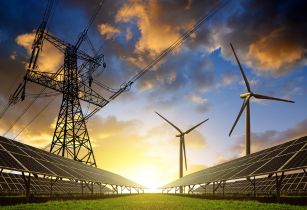Martin Clark explains how the MENA region can balance energy transition and a fast-growing economy
The success of the region’s major depends on accelerating investment in new infrastructure. Saudi Arabia, for example, wants 50% of its electricity to come from renewables by 2030. But the kingdom has long burned oil in its power stations, an expensive and polluting method that reflects the scale of the transition needed – today, Saudi Arabia remains one of the world’s largest CO2 emitters. Given the scale of renewable developments in China, it may well be possible, but it won’t be an easy feat and will require a concerted effort from suppliers and contractors – as well as a large sum of money.
Long-term, however, the intention is to move away from fossil fuels altogether and switch to more sustainable alternatives, such as solar, wind, hydro and hydrogen. The UAE has also become the first Gulf state to launch nuclear power production from its Barakah plant – a first for the Arabian Peninsula – which began operations in 2021. It will play a vital supporting role for decades to come in maintaining a stable electricity supply during a time of great change.
High stakes
The UAE has been among the prime movers when it comes to building up its renewables sector. Total installed renewables capacity has increased tenfold since 2017, reaching 3.1GW in 2022. While Saudi Arabia has equally ambitious plans, it has been much slower to act with just 443MW of installed capacity, mainly from the Sakaka solar plant. If the Kingdom is to meet its target of generating half its power from renewables by 2030, then it will require a huge acceleration in the years ahead, both in terms of timing and investments.
Abu Dhabi is also the world headquarters of the International Renewable Energy Agency (IRENA). By its own admission, there is a lot of work to be done. IRENA says the entire region currently has approximately 29GW of renewable generation capacity, a global share of just 1% – though this is rising faster than elsewhere.
Global challenge
Of course, what is happening in the Middle East is not isolated. The energy trilemma – balancing security, sustainability and affordability – is testing all countries around the world at the same time. Irena estimates that the world will collectively require some US$35 trillion in investments by 2030 for a successful transition. Together, such collaborations will begin to build and reimagine the new energy infrastructure required to displace the entrenched role of fossil fuels in the region’s power supply – and start to chip away at carbon emissions on the road to net zero.






